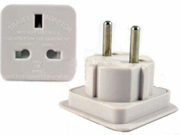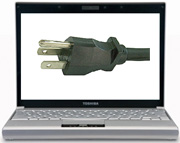Just imagine traveling without a photo camera, without music and no means to send an important or thoughtful message back home. Somehow people managed to go through that in the past, but today you're likely to bring all sorts of portable electronic devices with you. Since you will want them to last for more than one battery cycle, bringing their respective chargers along is an obligation no traveler can escape anymore. That's why you need to be prepared to deal with what more than likely be different power outlets.

During your stay in America you will inevitably get acquainted with the ubiquitous NEMA connector. If you are traveling from continental Europe, you will notice its prongs are flat instead of round and they have holes at the tip. They are called NEMA-1 and they can be your best friends if you are prepared for them.
This is best ensured if you have an adapter at hand. They are easy to find and inexpensive to own. Now, this you may not notice but their voltage is as different as their looks: it produces about half the volts your outlets back at home do. But don't stress about that. Thanks to the magic of modern engineering, most mobile devices today are designed for worldwide use and can figure out the voltage -- which is likely to be at some point between 110 volts (which you will get in New York) or 220 volts (which you get in continental Europe) -- by themselves, conveniently letting you out of the tedious electronic adaptation process.
Now. Hair straighteners, hair dyers or electronic razors -- generally, appliances designed for home use -- are a different story.
If you are planning to use them during your trip to New York, remember to get a voltage-increasing converter because those USA-standard 110 volts are not going to do much for them.

The same thing happened to laptops all over the world. Like other, equally big appliances (washers, dryers, air conditioners, refrigerators and freezers), they need around 125 volts to start working.
You will notice these use a variation on the average NEMA outlet: the NEMA-5. They have an additional, round-shaped prong which allows for the extra oomph. Since computers are designed for worldwide use, you can easily solve the problem by carrying a NEMA-5 adapter next to your NEMA-1 one. Bear that in mind before you decide to bring your laptop with you.